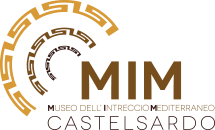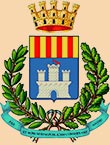Museo dell'intreccio mediterraneo di Castelsardo
Main site sections
Castelsardo:the city of basketmaking
The art of basketing was already evident in Castelsardo in the Nuraghic period, during which the techniques for the production of artifacts for the preservation and processing of foodstuffs were most probably known: simple versions of the traditional corbule and those yet to come, breadbaskets and baskets. However, basketmaking remained a family and social activity, dedicated to the making of articles used in fishing and agriculture, and specific guilds were never formed.
Castelsardo, in fact, has always boasted excellent craftsmanship in various sectors (fishermen, masons, carpenters, weavers and basketmakers) but has never organized these artforms in guilds of artisans or crafts. Basketmaking craft production is featured in the work of fishermen and farmers of the area. All the articles used in the activities of processing, storage and transport of their products were made using various basketmaking techniques. Thus Castelsardo became the custodian, not through the written documentation but by the handing down of craftsmanship through the generations of fishermen and basketmakers, of a large range of artifacts, among which: fishing creels, breadbaskets, panniers, sieves, screens, ropes and horsehair for mattresses.
The plant fiber predominantly used is the dwarf palm, which used to grow abundantly in the Castellana area, but now is very scarce and, like many other Mediterranean shrubs, is protected by environmental legislation.


